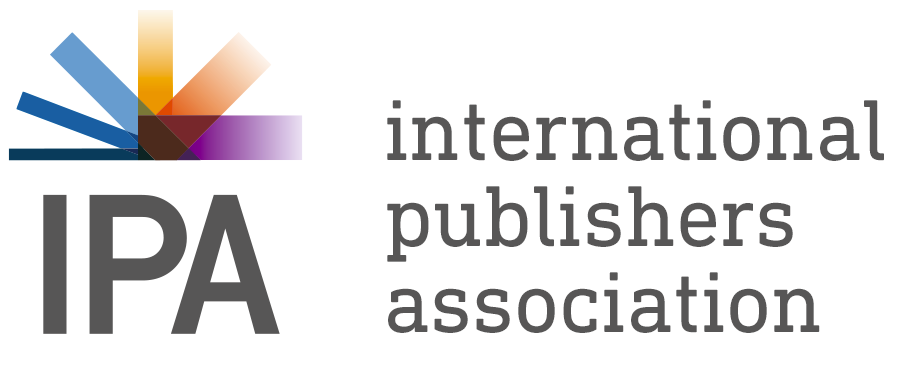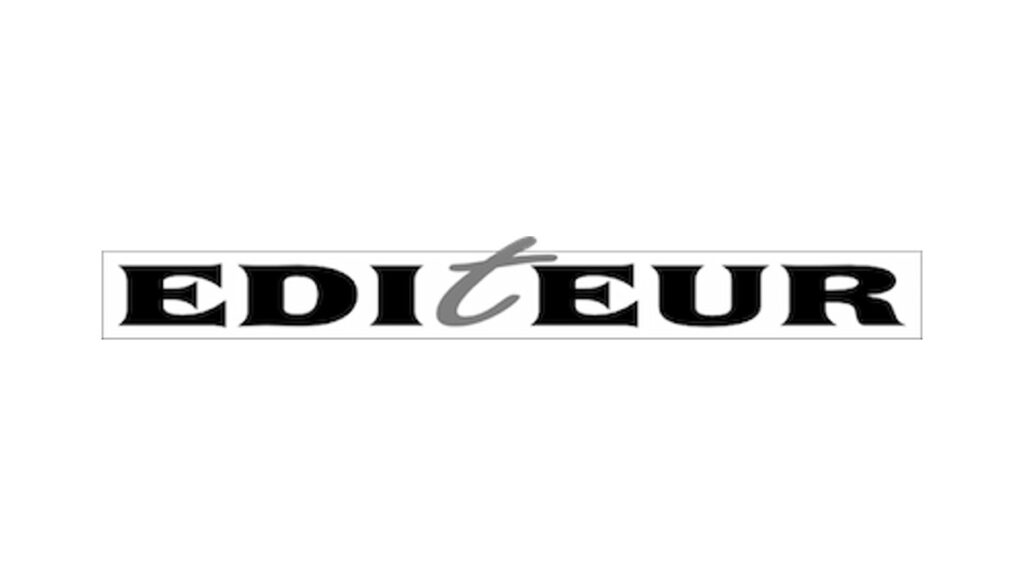Recap:
Metadata management is an important aspect of publishing. It’s the key information about a publisher’s products that needs to be shared with the remainder of the supply chain – from the basic title, author, ISBN, cover image, publication date and price, to richer information like abstracts or summaries, contributor biographies, open access licenses and details of international distribution arrangements. Metadata is often communicated via ONIX, a standard data file format that publishers, retailers, libraries and various intermediaries use, across many countries. It encompasses bibliographic information about the book itself, but also the vital marketing collateral and commercial arrangements. If you’re unfamiliar with ONIX, there’s a 15-minute video briefing available at https://tinyurl.com/3eyy3a9f.
EDItEUR is a member-supported independent trade association and standards body that’s best known for developing, supporting and promoting the ONIX and Thema standards, ensuring our ‘metadata supply chain’ remains based on free-to-use, open standards. The latest versions of its standards specifications can be found on the EDItEUR website https://www.editeur.org/.
In this series, Graham Bell, Executive Director of EDItEUR, shares occasional updates on EDItEUR’s work and the standards it manages
There’s no shortage of manuscripts. The trick is to publish the right manuscripts. One of the key roles of a publisher is selection or curation. Equally, a bookseller’s business is also about selecting publications to feature in their store. But often, that process of selection can inadvertently become a process of gatekeeping. Indigenous authors, and topics of interest to Indigenous readers can be marginalised, under-represented or excluded from bookstores, and from the publishing programmes of dominant publishers.
To some degree, the lowered barriers to self-publishing have helped. But supply chains, industry norms and standards have often developed without specific input from Indigenous communities, and can sometimes fail stakeholders in those and other marginalised groups. Trade associations the Australian Publishers Association, BookNet Canada and la Société de gestion de la banque de titres de langue français (BTLF, also based in Canada) have – together with EDItEUR – recognised this via the publication of a set of guidance documents that aim to illustrate how EDItEUR standards like ONIX and Thema can help highlight Indigenous creators and content, within the framework of existing standards and practices.
Metadata standards such as ONIX and Thema are used to communicate information about books, e-books and audiobooks, and their scope extends across international borders, languages and cultures. ONIX and Thema are both multi-lingual, making use of many language-independent codes to communicate key concepts. In ONIX, the product form code BB means hardback or hardcover, relié, gebundene Ausgabe, 양장본 or 精装书. Equally, in Thema, subject code MKE denotes dentistry, odontología, hammaslääketiede, طب الأسنان and so on. But any standard intended to be global in scope risks reflecting only a majority culture’s preferred terminology. ONIX and Thema are designed to support discoverability and access, but don’t always reflect the concepts and terms preferred by particular Indigenous groups. Take for example the name of the language a book is written in – clearly of great importance to booksellers, readers, librarians and scholars. Is the book in the language widely known as Swampy Cree, spoken by Indigenous communities across northern Manitoba and Saskatchewan? Well, that’s not a name used by speakers or readers of that language. Swampy Cree is an exonym, imposed upon those speakers by settlers, colonialists, external linguists and standards bodies. More likely, those who speak the language call it Omaškêkowak.
There are of course some necessary terminological compromises. Omaškêkowak cannot be the only name listed in the ONIX codelists, for reasons of broad understanding and of interoperability with other standards. The ONIX list of language codes is based primarily on the widely-used ISO 639‑2/B standard, and thus follows the naming and orthography of that standard. And is Omaškêkowak listed in ONIX? Not yet, but many other endonyms are, at least as alternatives to the ‘standard’ name, and a process for adding further endonyms is in place.
But language, and the naming of languages, are not the only areas of concern. Within the bounds of such compromises, and with an eye to limiting the overall complexity of the scheme, it’s important to continue to enrich ONIX and Thema, incorporating concepts from multiple cultures and as far as possible allowing Indigenous communities to represent these concepts in their own terms.
The recently-published ONIX and Thema guidance documents cover contributors – their names, as well as how they identify and how they link with various Indigenous communities – and the subject of a book and how it relates to or features Indigenous Nations, peoples, communities or individuals. Marketing collateral of various types – websites, literary prizes or well-written descriptions can all be important in highlighting Indigenous content. Together, these elements of metadata help to boost visibility and discoverability, bringing Indigenous content and creators to the widest possible readership.
Contributors
In ONIX, <Contributor> is one of the most fundamental ‘composites’ (sections) within the metadata for a product. It includes, in a highly structured manner, the elements of a contributor’s name, role with relation to the product (author, illustrator, translator or whatever), and many aspects of their identity. That can include an ISNI or ORCID identifier, to disambiguate a personal name, as well as a biography, geographical links and professional affiliations. Personal identity information can be highly sensitive, so should wherever possible be agreed with the contributor in advance of the metadata being distributed in the metadata – informed consent is critical. It can also include an alternative name, one by which the contributor is also known. This author is known as Oodgeroo within her Aboriginal Australian Noonuccal community, but also (formerly) as Kath Walker:
<Contributor>
<ContributorRole>A01</ContributorRole> <!– Written by –>
<PersonName>Oodgeroo Noonuccal</PersonName>
<KeyNames>Oodgeroo</KeyNames>
<TitlesAfterNames>Noonuccal</TitlesAfterNames>
AlternativeName>
<NameType>03</NameType> <!– Earlier name –>
<NamesBeforeKey>Kath</NamesBeforeKey>
<KeyNames>Walker</KeyNames>
</AlternativeName>
</Contributor>
The list of Contributor role codes incorporates a number of roles, including As told by and As told to, that are suitable for use with inter alia Indigenous traditions of oral storytelling.
<Contributor> can also include a biography – or parallel biographies in multiple languages. In ONIX, this is a free text field that can consist of multiple paragraphs, and is the best way to express the nuanced and intersectional nature of personal identity:
<BiographicalNote language=”eng”>Sipi Flamand, whose traditional name Miaskom
Sipi means ‘at the meeting of two rivers’, is an Atikamekw Nehirowisiw and
the current chief of the Manawan community. A political and cultural actor,
he is actively involved in the revitalization of Indigenous political
thought and governance, but especially in the movement towards
decolonization and Indigenous resurgence, on the political, cultural and
social levels. Sipi Flamand is also a filmmaker and pow-wow dancer.
</BiographicalNote>
Of course, the above could be repeated in the Atikamekw language as well.
As well as the descriptive text, a contributor’s affiliation to Indigenous territoriality can also be listed in a structured way:
<ContributorPlace>
<ContributorPlaceRelator>12</ContributorPlaceRelator><!– Indigenous to –>
<CountryCode>CA</CountryCode>
<RegionCode>CA-QC</RegionCode>
<LocationName>Manawan</LocationNamme>
</ContributorPlace>
Contributor places (there can be many, with different types relationship with the contributor) can help a bookseller or librarian pick out those books that have relevance for a particular customer or patron, or enable customer-facing promotion of the works of Indigenous contributors. <ContributorPlace> can also be used to claim eligibility for particular marketing campaigns around indigenous authors or citizens of a country or region.
Subjects, audiences and interest groups
Knowing what the book is about is critical to selection of works and products that relate to Indigenous Nations, peoples, groups, individuals, topics or stories. The ONIX <Subject> composite supports discovery of this subject matter. <Subject> supports many different subject categorisation or classification schemes, for example BISAC for USA-based retailers, Dewey for libraries and so on, but EDItEUR’s Thema subject category scheme is intended for global book trade use.
Thema is a post-coordinated scheme, meaning that a single book can be associated with multiple subject categories, and that some of those categories can qualify or add nuance to the meaning of others. So for example:
<Subject>
<MainSubject/> <!– flag to indicate that this is the single
most important Thema subject code –>
<SubjectSchemeIdentifier>93</SubjectSchemeIdentifier> <!– Thema –>
<SubjectSchemeVersion>1.6</SubjectSchemeVersion>
<SubjectCode>YFMF</SubjectCode> <!– Children’s / Teenage fiction
and true stories: Friendship stories –>
</Subject>
<Subject>
<SubjectSchemeIdentifier>94</SubjectSchemeIdentifier> <!– Thema –>
<SubjectSchemeVersion>1.6</SubjectSchemeVersion>
<SubjectCode>3MPQV</SubjectCode> <!– c. 1970–79 –>
</Subject>
<Subject>
<SubjectSchemeIdentifier>98</SubjectSchemeIdentifier> <!– Thema –>
<SubjectSchemeVersion>1.6</SubjectSchemeVersion>
<SubjectCode>5PB-AU-AD</SubjectCode> <!– relating to Australian
Aboriginal peoples –>
</Subject>
<Subject>
<SubjectSchemeIdentifier>98</SubjectSchemeIdentifier> <!– Thema –>
<SubjectSchemeVersion>1.6</SubjectSchemeVersion>
<SubjectCode>5AS</SubjectCode> <!– interest age: from 15 years –>
</Subject>
indicates a novel about friendship, about or of particular relevance or interest to an audience of Australian aboriginal teens, and set in the 1970s. Combining multiple Thema categories in this way should be possible in any metadata management software that supports Thema.
It should be said that schemes like BISAC also include categories for various Indigenous topics, for example JNF076010 indicates ‘Juvenile non-fiction / Indigenous / Animal stories’, though BISAC’s approach is significantly less flexible.
Websites
ONIX also features a newly-added Website role code that allow specification of a website that is or includes a statement or resource relevant to Indigenous publishing. This could be content hosted by the publisher, by a contributor, or by a third party. Examples include Reconciliation Action Plans (RAPs), Indigenous Cultural and Intellectual Property (ICIP) acknowledgements or cultural protocols, nation, community or language resources, or contextual references such as Indigenous place names, territories, or treaties (eg native-land.ca). The following is an acknowledgement that the publisher is using Indigenous intellectual property:
<Website>
<WebsiteRole>54</WebsiteRole> <!– Indigenous statement or resource –>
<WebsiteDescription>Creative Australia Protocols for using First Nations
Cultural and Intellectual Property in the Arts</WebsiteDescription>
<WebsiteLink>https://creative.gov.au/wp-content/uploads/2021/07/protocols-
for-using-first-nati-5f72716d09f01.pdf</WebsiteLink>
</Website>
The recently-published documents are the output of an extensive process of discussion with Indigenous colleagues, illustrating what can be achieved already to highlight Indigenous content and contributors using ONIX and Thema, and they are intended to serve as a starting point rather than a final statement. Further engagement will only improve the standards and the way they can support Indigenous publishing.
Box out
Highlighting content and contributors relating to Indigeneity and Indigenous Nations and peoples:
Courtesy of translation work by BTLF, these documents are also available in Canadian French:

